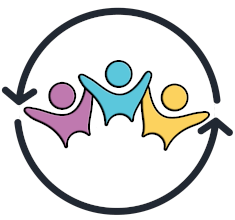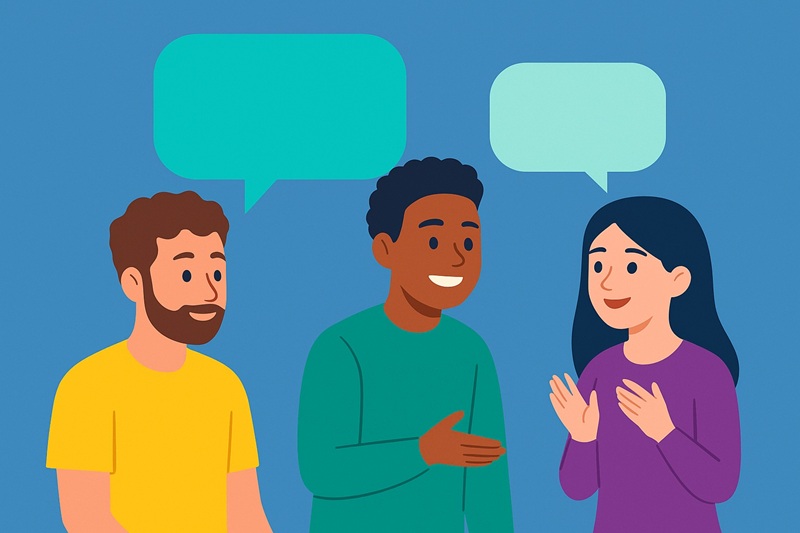Conversations are the cornerstone of human interaction. They are how we share ideas, express emotions, and connect with others. While most people navigate the back-and-forth nature of conversations without much thought, individuals with autism or other disabilities often find this process to be much more complex. Conversations involve numerous unspoken rules, from taking turns to reading social cues, which can feel overwhelming or confusing to someone who struggles with social communication. This blog will explore the difficulties this population faces when starting and maintaining conversations, recognizing the challenges without offering quick fixes, and how programs like Capability Connections are designed to support them.
The Flow of Conversations: A Back-and-Forth Exchange
At its heart, a conversation is a two-way street. It flows between two or more individuals in a give-and-take rhythm, with each person contributing to the dialogue. For many people, this flow comes naturally. They know when to speak and when to listen, how to ask questions, and how to transition between topics.
For individuals with autism and other disabilities, this flow may not be as intuitive. They might struggle with several key components of conversation, such as:
- Starting a conversation: Knowing how and when to initiate a conversation can be daunting. Many find it challenging to gauge the right moment to approach someone, what topics are appropriate, or how to capture the other person’s interest.
- Maintaining the flow: Conversations require active listening, thoughtful responses, and an understanding of social cues. For individuals with autism, these elements might not come easily, leading to one-sided conversations or awkward pauses.
- Recognizing conversational cues: Social cues, like body language or tone of voice, often signal when it’s time to speak or when to allow the other person to respond. For someone who has difficulty recognizing these signals, conversations can become disjointed or even frustrating for both parties.
Common Challenges in Conversation
Let’s explore some of the specific challenges individuals with autism or other disabilities might face when it comes to starting and maintaining conversations:
- Over-Talking the Other Person
Conversations involve balance, where each person takes a turn to speak. However, some individuals with autism may have trouble recognizing when it’s time to stop talking and allow the other person to respond. They may become so focused on sharing their thoughts or experiences that they unintentionally dominate the conversation. This can lead to frustration for the listener, who feels like they aren’t given the space to participate. Over-talking can make it hard to build genuine connections, as conversations should feel like a shared experience rather than a monologue. - Difficulty Listening and Giving Time to Talk
Active listening is an essential part of conversation. It’s about truly hearing what the other person is saying and responding in a way that shows interest and engagement. For some individuals, staying focused on what the other person is saying, rather than thinking about their next point, can be a challenge. They might inadvertently interrupt, talk over, or redirect the conversation back to themselves without giving the other person a chance to fully express their thoughts. - Seeming Interested in What the Other Person Says
In social interactions, showing interest in what others are saying is key to making a conversation enjoyable for both parties. This interest is often conveyed through verbal affirmations (like saying “I see” or “That’s interesting”) and non-verbal cues (like maintaining eye contact or nodding). However, for individuals with autism, these subtle social cues may not come naturally. As a result, they might appear disengaged or uninterested, even when they are trying to participate in the conversation. This can lead to misunderstandings or make it harder for the other person to feel valued in the interaction. - Awkward Silences and How to Fill or Avoid Them
One of the most uncomfortable moments in a conversation is the dreaded awkward silence. For individuals with autism, these moments may occur more frequently because they are unsure of what to say next or how to transition smoothly between topics. While many people can instinctively fill these gaps, those with communication challenges might feel stuck or anxious when the conversation stalls. This can cause stress, making them even more hesitant to engage in future conversations. - The Pressure to Fit in Socially
Conversations are a way to build social bonds, but they also come with the pressure to fit in and be understood. Individuals with autism may struggle with the fear of making a conversational misstep, being misunderstood, or saying something that doesn’t align with social expectations. This fear can lead to anxiety, causing them to withdraw from social interactions or avoid conversations altogether. It’s a complex challenge—wanting to connect with others but feeling unsure of how to do so successfully.
Recognizing the Need for Support
These challenges paint a picture of the difficulties that many individuals with autism or other disabilities face when it comes to conversations. But the goal of this blog is not to provide quick solutions. We recognize that these issues are deep-seated and complex, requiring thoughtful and ongoing support to address.
At Capability Connections, we understand that developing conversational skills is not something that happens overnight. Our program is designed to help individuals navigate these difficulties through structured learning, practice, and positive reinforcement. We offer both in-person group sessions and online courses that are tailored to support individuals in mastering the flow of conversations—learning to initiate, maintain, and close conversations with confidence.
Our approach is focused on creating a safe, supportive environment where participants can learn at their own pace. By joining Capability Connections, participants will gain access to valuable tools and strategies that address the very challenges we’ve discussed in this blog. From recognizing social cues to practicing active listening, our program offers a comprehensive path toward improving social communication.
Join Capability Connections: The Path to Better Conversations
Conversations are essential for forming relationships, building friendships, and navigating the world. For individuals who struggle with starting and maintaining conversations, this can be a major hurdle. But there is hope. Capability Connections offers a supportive community where participants can develop these crucial skills in a way that is both empowering and practical.
If you or your loved one faces challenges with conversations, know that you’re not alone. Our program is here to guide you through the journey of social communication, helping you build confidence and competence along the way.
Instead of struggling through awkward silences, over-talking, or feeling disconnected, join Capability Connections and learn how to unlock the flow of meaningful conversations. Whether through our in-person groups or our online course, we are here to support you in building the social skills that matter most.



